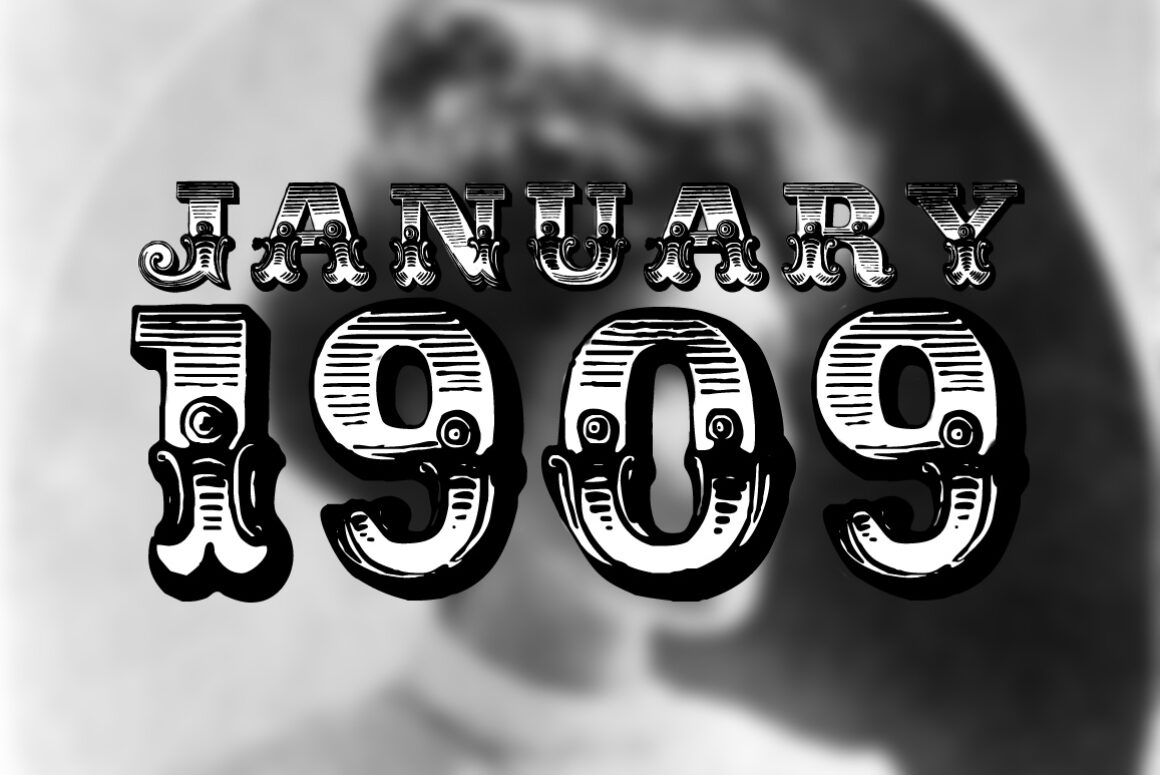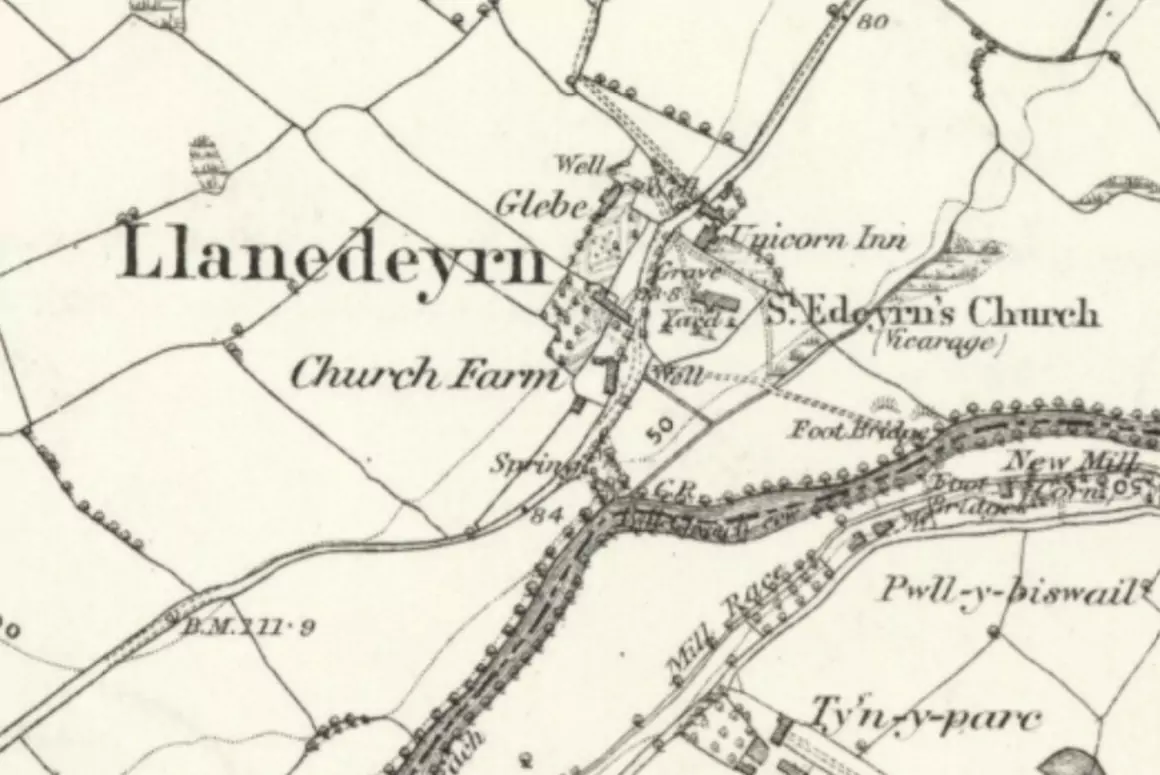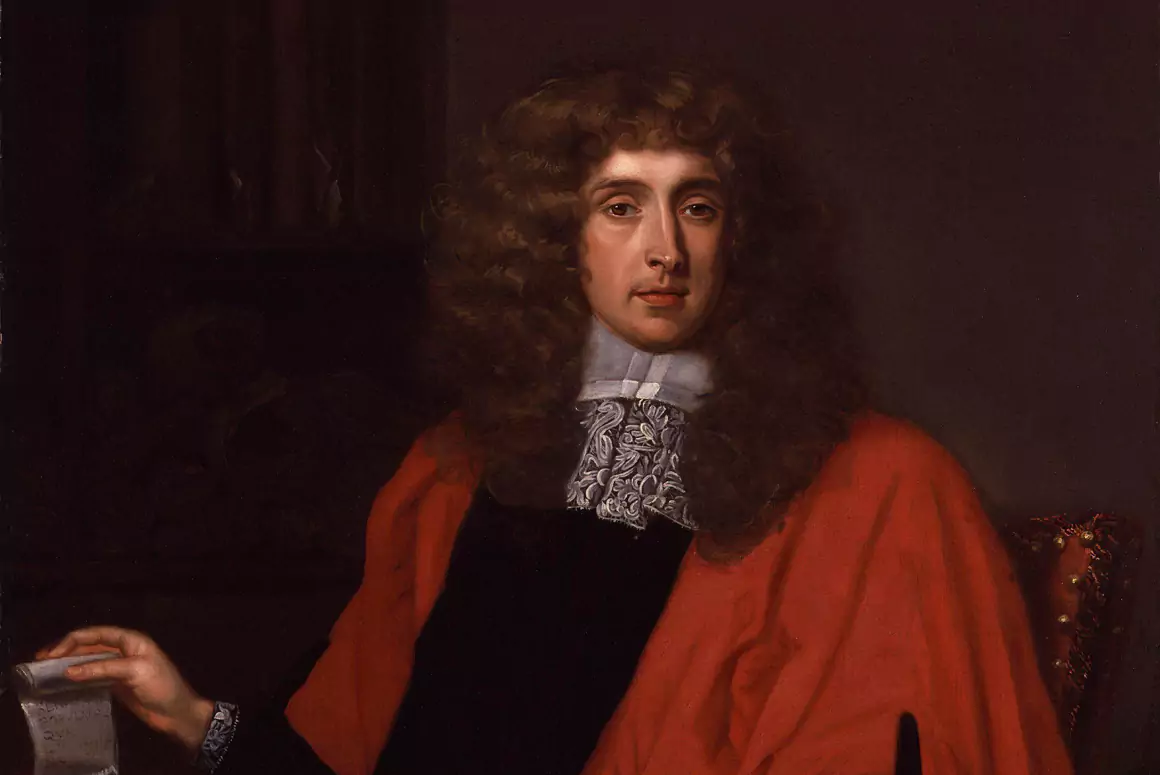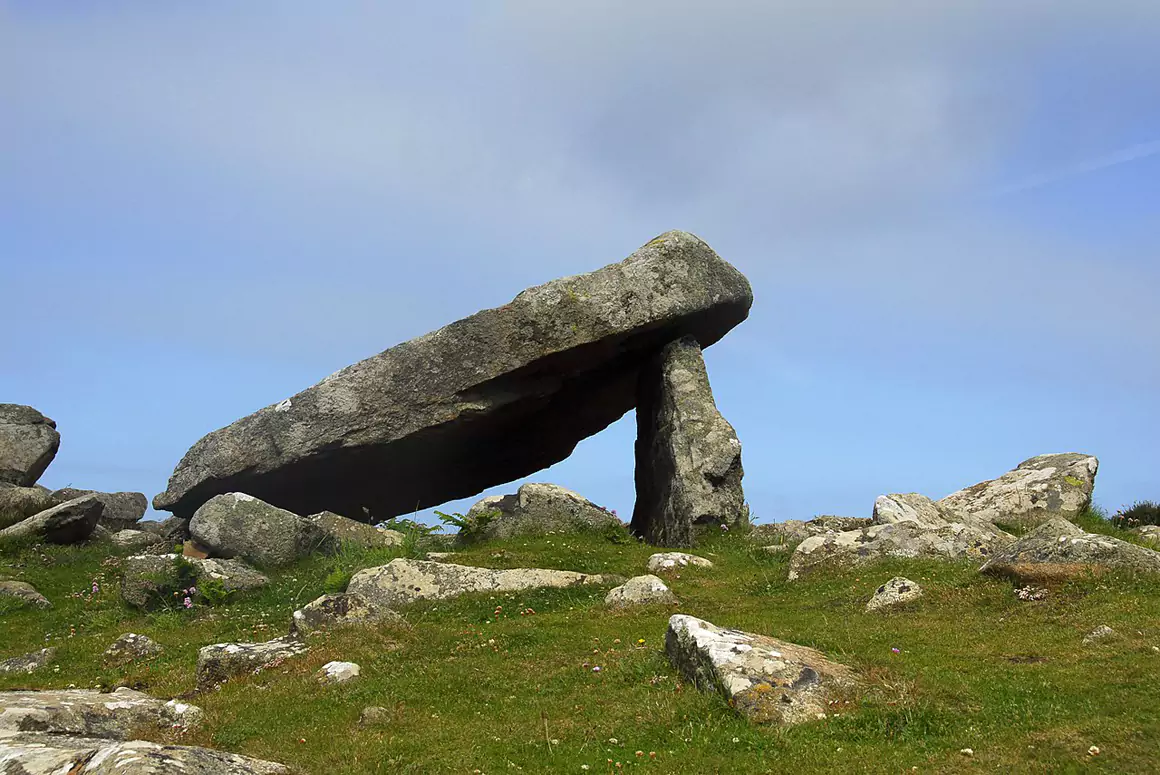![]()
This is a remarkable story, more so perhaps because it is largely a forgotten one. At the time though, it was, briefly, a consuming and altogether delicious scandal.
As far as we are concerned, the story of Violet Charlesworth begins in early January 1909 with headlines in The North Wales Weekly News, about The Motor Car Mystery, about the Cliff Tragedy near Penmaenmawr.
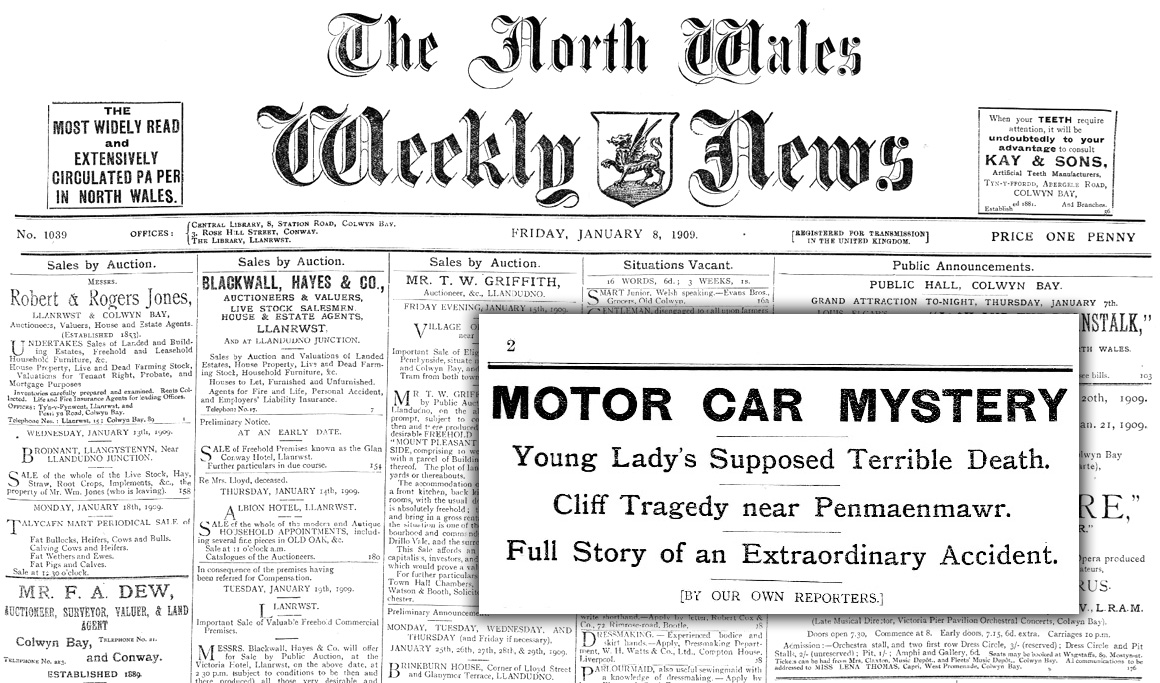
This was an unexpected and exciting moment for this unassuming town on the north Wales coast, west of Conwy. Suddenly there were Wild Rumours: Strange Stories: Fresh Clues.
To be honest, the story could have hardly been more thrilling.
It is believed that a terrible fate befell a young lady named Miss Violet Charlesworth, of St Asaph, whilst motoring between Penmaenmawr and Conwy, on Saturday night. According to the accounts given by the travelling companions, one of them her sister, and the other the chauffeur, Miss Violet was pitched out of the car by colliding with a wall, and fell fifty feet down a cliff into the sea. Her body has not been recovered.
The story was that two sisters, Violet and Lilian Charlesworth, had gone out for a drive from their home in St Asaph, eventually stopping for refreshment in the Castle Hotel in Bangor. On the way home, at the somewhat dangerous Penmaenbach Point when Violet was driving, the car collided with a boundary wall, knocking part of it down, and stopping on the very edge of a cliff.

By the force of the impact with the wall, Miss Violet was pitched from her position at the wheel through the glass wind-screen and over the edge of the cliff into the sea.
A distressed Lillian rushed to The Ship Inn to raise the alarm and soon people were vainly searching the rocks for clues. A hat and a notebook were found, but there was no sign of Violet. Lillian and the chauffeur, Albert Watts, were made incoherent by their distress and were taken to the Gwynfa Boarding House to recover before questioning. The only physical injury Watts appeared to have sustained was a bruise the inside of a leg.
People gathered at the scene, where aided by the brilliant moonlight, every likely spot was visited, and in dark corners matches were used, but no traces of the body could be found.
When the police attended the guest house to question Lillian and Albert, they had been taken back to St Asaph and were too unwell to speak in any detail. A reward was offered for the recovery of Violet’s body and men in boats with nets trawled off -shore, but with no results. Photographs were published of Violet, an attractive young woman, which only added to the tragic sense of a life lost too soon.

The car was removed to a local garage and people gathered to inspect the damage, though with growing surprise. There was, in fact, little to see. There was no evidence of blood, which might have been expected if someone had actually gone through a windscreen, across the length of the long bonnet, and then down into the sea. And, if Violet was driving, how come the hole in the screen was on the passenger’s side?
Today, curious visitors have even less to see. The place where there was once a gap in the retaining wall is now called Violet’s Leap, an indication that all too-soon, no one took the incident very seriously for very long.
In truth, it wasn’t a very clever story at all, and it soon unravelled as the newspapers hunted voraciously for the truth. Just a week later, the North Wales Weekly News, so recently so very excited, commented that:
“As for the people residing in the vicinity of the alleged accident, they don’t know where she is, and, what is more, they don’t care a motor spanner.”
Of course, Violet wasn’t dead at all. She was tracked down to a hotel in Oban in Scotland, on the run from creditors, in the name of Margaret Macleod. Soon an even more compelling story was uncovered.
With her mother and sister, Violet had spent years in many different fraudulent schemes, extracting large amounts of money from suitors, doctors, widows and stockbrokers. She had been born as May Charlesworth in Stafford in 1884 and by 1907, the family had opened a shop in Rhyl, claiming that Violet was the god-daughter of General Gordon, who had been killed defending Khartoum in 1885. She would, they claimed, inherit £100,000 from Gordon’s estate when she was twenty five. Consequently, the gullible would lend them significant money, secured on the expectation of this exciting legacy. The more money she attracted, the more plausible her story appeared to be. The family moved to a large residence in St Asaph and ran a fleet of cars with chauffeurs. Violet rented a second property at Calne in Wiltshire and a shooting estate at Fortrose in Scotland.
But there were unwise investments on the stock exchange. Made with money that wasn’t hers, and Violet ran up unsustainable levels of debt as her twenty fifth birthday and the mythical inheritance approached. And so she ran, but she couldn’t hide and newspaper reporters from across the world loved every moment.
Yet even at this stage, detained and awaiting trial, and owing over £2 million in today’s money, she was keen on re-enacting her drama. She returned to Bangor and staged her pre-accident afternoon tea in the Castle Hotel for the benefit of photographers. In fact, they took photographs along the whole of the route to Penmaenmawr. These would be visual aids – a early PowerPoint presentation perhaps – as the papers explained.
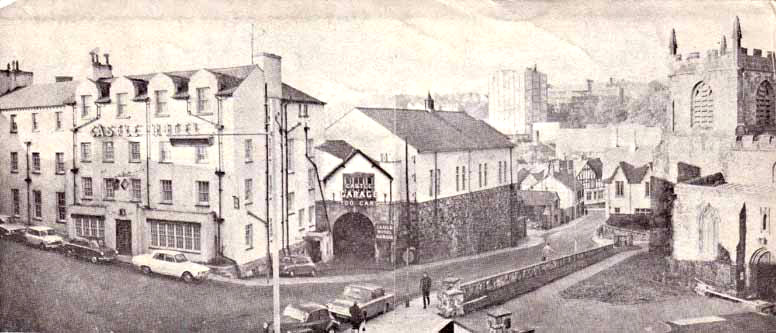
Miss Violet Charlesworth has been appearing nightly at both the Willesden and the Balham Hippodromes in London. In spite of considerable hostility on the part of many of the public, she has received a very fair hearing at both theatres, upon several occasions being saluted with cheers.
Incorrigible.
In March 1910, Violet and her mother were sentenced to five years hard labour in Aylesbury prison for conspiracy to obtain money by false pretences. After this, Violet disappears from the records, though the death of a woman called May Charlesworth, who might well have been her, is recorded in Stoke in 1957.
It is a tantalising story and I can’t help thinking that even now, more than a hundred years later, there is a family, somewhere, that knows far more about this story than we do.
Words: Geoff Brookes
Images: The National Library of Wales | British Newspaper Archive | Bangor Old Photographs


